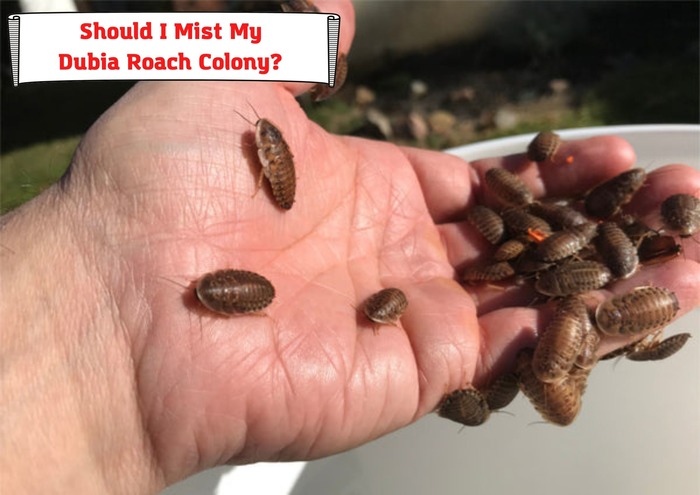No one wants their pet to suffer. If your turtle is looking alarmingly swollen, you are right to fret.
All is not well with your little buddy! Swelling causes the body tissue to ‘overflow’ out of the snug shell and prevents your turtle from retreating into its cozy home. That certainly causes some discomfort.
Granted, visiting a reptile veterinarian is the fastest and best way to solve your problem. A little research won’t hurt. If nothing else, it helps ensure you do not appear as a careless or ignorant pet owner on your visit to the vet. We are here to provide crucial information about what could be going on.

This article will discuss the following:
- The most common cause of full-body swelling in turtles
- How to care for your turtle to avoid ailments
The Most Common Cause of Full Body Swelling in Turtles
The most important question is whether the turtles swelling increased over a period of time or happened suddenly. While neither of the situations is perfect, an overnight swelling is likely less serious and faster to solve.
Swelling that has developed over time is likely due to nutritional deficiencies that trigger systemic organ failure, especially in the kidneys and heart. If this is the case, your turtle’s prognosis may not be very good. If the swelling has been progressing for some time, your turtle is likely suffering from lymphoedema.
Lymphoedema in turtles is not a disease in itself but rather a symptom of several health conditions that cause your turtle to retain fluids in its body tissue and consequently balloon. These conditions are often caused by poor nutrition and occur simultaneously. These include:
- Kidneys failing to eliminate waste
- Heart problems – tachycardia
- Abscesses that can disrupt the flow of lymphatic fluid
- Bladder problems
- Liver problems
- Bacterial infections
- Fungal infections
- Viral infections
The long list of likely causes should indicate why visiting a vet is better than playing Russian Roulette while your turtle continues to suffer.
Vitamin A Deficiency (Hypovitaminosis A) is Likely the Culprit Behind Your Turtle’s Swelling
With turtles, most of their illnesses begin with a poor diet that lacks enough Vitamin A. This Vitamin is crucial for turtles because it plays a key role in physiological processes, including growth, vision, immunity, and maintaining healthy skin and mucus membranes.
If you feed your turtle a steady diet of lettuce, meat, or low-quality commercial pellets, it may develop hypovitaminosis A. Your turtle’s diet should contain a healthy variety of these foods. Do not purchase a good supply of one menu item and proceed to bore your turtle to severe illness by being repetitive.
Your turtle’s body organs demand a variety of high nutritional value food sources to work as expected. Rotate the food supply between leafy greens, commercial products, and animal protein sources like insects or fish.
A keen pet owner may notice some of these symptoms when their turtle is experiencing Vitamin A deficiency:
- Changes in the epidermal (top skin) layer, mucosal glands, and membranes that line the mouth, eyes, mouth, kidneys, and upper tract of the respiratory system. The areas around the eyes and mouth may appear swollen and inflamed, as is the case on the inside of the upper respiratory tract and kidneys. This causes kidney failure and, subsequently, lymphoedema.
- Cloudy or dull eyes that produce a pus-like discharge
- Loss of appetite and subsequent weight loss
- A weakened immune system opens the door to infections
Treatment of Vitamin A Deficiency
Vitamin A deficiency is easy to treat, provided it has not progressed long enough to cause severe secondary health conditions in your turtle. Your reptile veterinarian will prescribe oral or injectable Vitamin A supplements to give your turtle a much-needed boost. Do not treat your turtle without a veterinarian’s supervision. The last thing you need is to administer a Vitamin A overdose to your turtle because that is also harmful.
Vitamin A supplements are an emergency treatment that must be coupled with the correction of the real cause of the problem. Your turtle’s diet. A vet can help you create a diet with a healthy variety of food items necessary to keep your turtle healthy without resorting to commercial food and supplements.
Respiratory Infections
Respiratory infections may affect your Vitamin A-starved turtle before the lymphoedema sets in. As explained above, Vitamin A deficiency affects the mucosal glands and membranes in your turtle’s upper respiratory tract. The resultant irritation and inflammation, coupled with lowered immunity, allow bacteria to thrive. If your turtle swelling is happening alongside a respiratory infection, you may notice the following additional symptoms:
- Excess mucus in the nose, mouth, and eyes presents as bubbles on these organs.
- Loss of appetite
- Nasal discharge
- Wheezing
- Gasping
- Open mouth breathing
- Extending the neck to breath
Where the respiratory infection advances unchecked, it may eventually spread to the lungs and result in pneumonia. The most common sign of a pneumonia-stricken turtle is poor buoyancy which causes it to tilt to one side while swimming.
Treatment of Respiratory Infections
As your turtle’s respiratory infections are likely caused by a lack of Vitamin A, your reptile veterinarian will likely begin the treatment by reversing the nutritional deficiency. This will enable your turtle to put up a fight against the respiratory infections that have been ravaging its immune system.
Your reptile vet will likely recommend some blood tests, cultures, and X-rays to determine the extent of the infection. After proper diagnosis, the vet will prescribe an appropriate dosage of antibiotics to be administered orally, through the nose, or by injection. If your turtle is holding on by a fraying thread, your reptile vey may suggest intensive care at the clinic. Once the respiratory infections and Vitamin A deficiency begin retreating, the swelling will also follow suit.
Abscesses
An abscess is a swollen pus filed infected tissue on your turtle’s skin or in its body. Abscesses look like tumor-like swellings that are hard to the touch. They are firm because your turtle’s pus has a cottage-like consistency, i.e., thick and dry. They are also caused by Vitamin A deficiency.
Abscesses may be tough to spot once your turtle swells up. Try looking on the sides of its head for abscesses that occur around the ears and behind the eyes. Abscesses may
Treatment of Abscesses
Your turtle’s abscesses will have to be treated surgically. There are no two ways about it. Your little buddy will have to go under the knife. Your reptile vet will recommend opening the abscess, draining it, and flushing the affected tissues using a disinfecting cleaning solution. A vet who is extra vigilant may also take a culture of the abscess and test it to determine the exact bacteria causing it.
After surgery, your vet will send you home with topical medication to apply on the surgical site and oral or injectable antibiotics to fight off the reoccurrence of the infection.
Maintaining a Balanced Diet for Your Turtle
The least you can do for your turtle is to ensure it has an easier time under your roof than it would be foraging in the wild. Here are several tips to ensure your turtle’s health and well-being are never affected by a poor diet:
- Find out your turtle’s species and research the best food items for its particular needs. Turtles generally thrive on leafy greens, fruits, and vegetables alongside protein-rich foods like snails, fish, insects, and worms. It is also wise to find out which foods are substances are toxic to your turtle.
- Do not over-rely on commercial food pellets. Though they offer sufficient nutrition, there is something to be said for a fresh and natural food source. Natural food simulates a natural environment and promotes natural behavior, e.g., hunting.
- Once you have the recommended food items, ensure you feed your turtle a healthy variety of dishes. A monotonous feeding program is not only boring, and it is a health hazard. Ensure you feed your turtle the portions at the right frequency for its species, age, and size. As your turtle grows, it will need to eat less frequently. Adjust the portions to avoid overfeeding the turtle.
- Dust or gut load food items with Vitamin and calcium supplements to ensure healthy shell and bone development.
Conclusion
Sick pets often cause their owners’ serious distress. This distress sometimes causes people with good intentions to do the unthinkable. A turtle owner in the UK once abandoned their musk turtle in a park after it had swollen to monstrous proportions. Passersby spotted the poor creature and raised the alarm. The authorities rescued the turtle and tried to locate the careless owner to no avail. We hope they saved the turtle and found it a new home with a more responsible owner.
Luckily your turtle has a devoted owner, unlike the one abandoned. Your turtle’s swelling is an emergency situation that should be addressed before it gets worse. We hope this article has provided you with enough information to fight off the despair so you can take your next step with confidence.
- Pacman Frog Looks Deflated – What’s Wrong and What to Do? - August 7, 2023
- How to Put Snake Back in Cage after Feeding? Important Concerns - July 31, 2023
- Repta Boost: Instruction, Considerations, Ways to Use - July 24, 2023



